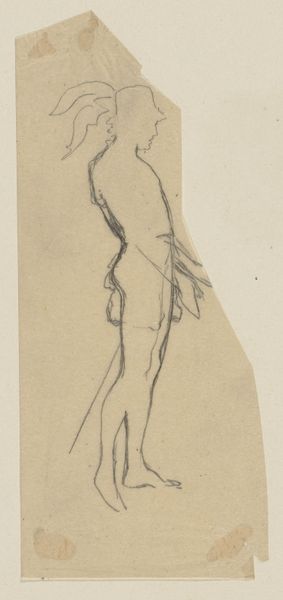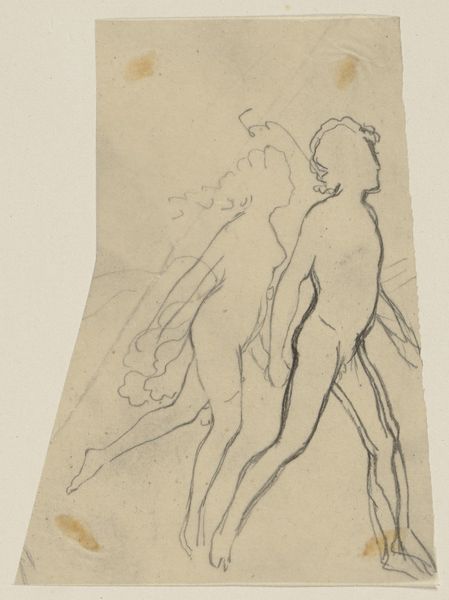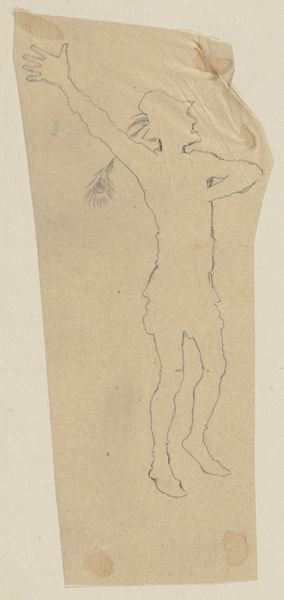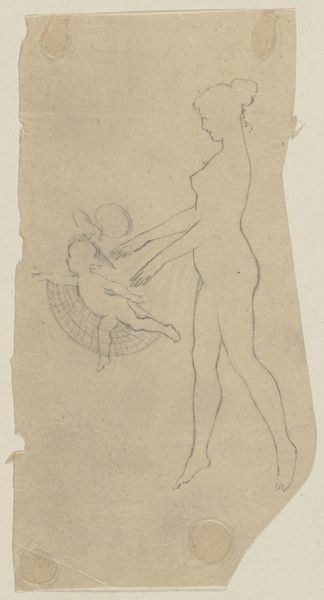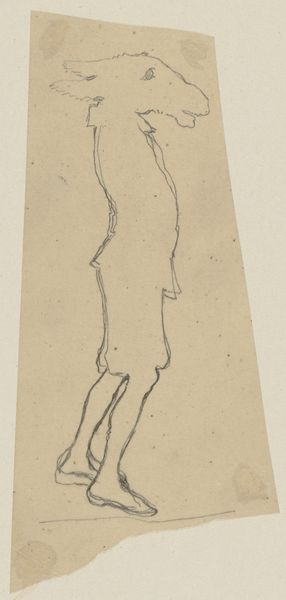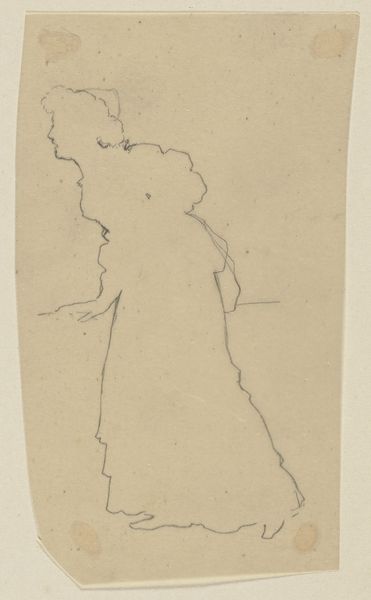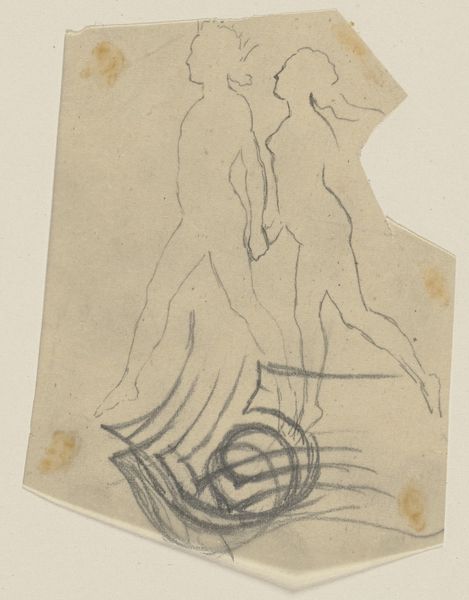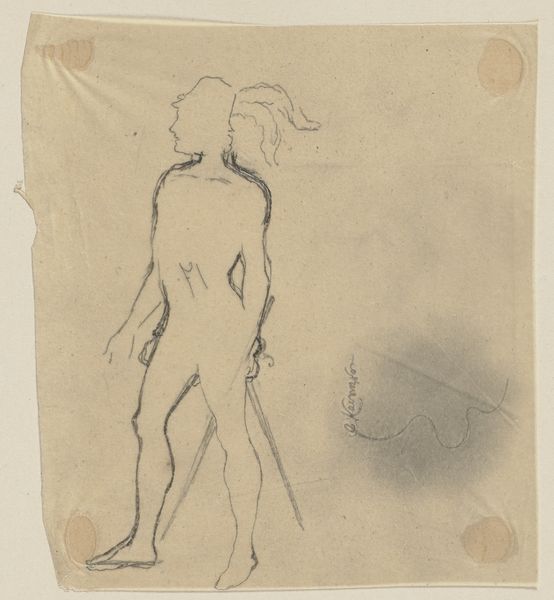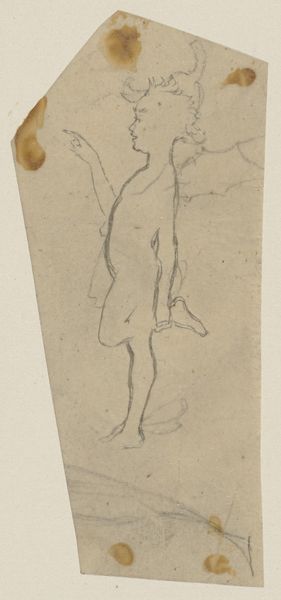
Puck, an einer Blume riechend und auf einem Bein stehend c. 1867 - 1868
0:00
0:00
Copyright: Public Domain
Curator: Konewka's drawing, around 1867, titled "Puck, an einer Blume riechend und auf einem Bein stehend," which translates to "Puck, smelling a flower and standing on one leg," uses delicate pencil lines. It resides here at the Städel Museum. What's your immediate reaction? Editor: It has this light, airy quality despite the simplicity of materials and the subject's whimsical nature. There’s something almost fleeting about the form; it is just a sketch. Curator: The character of Puck connects this piece directly to Shakespeare’s “A Midsummer Night’s Dream,” representing the complexity and contradictions of folklore as it manifests within colonial gender and societal structures. Editor: Thinking of Konewka’s process, though, makes me consider how readily available, how relatively inexpensive these graphite pencils were by the mid-19th century, influencing sketching, art and industry at the time. There’s a democratization of artmaking happening. Curator: It reflects how rapidly art, including performance and literature, could adapt those narratives into different social contexts—a German Romantic lens interpreting British Renaissance theater. It gives us a peek into queer subtexts or nascent anti-colonial resistance present within this seemingly innocent scene. The flower itself becomes an active symbol within Puck’s very presence. Editor: Precisely, it’s material as well as social availability allowing those readings. Moreover, how accessible has Puck been since Shakespeare and Konewka through different interpretations on stage, books, films…that kind of artmaking also fuels capitalism. The use of materials makes it transportable and consumable. Curator: It shows how a single drawing embodies layers of sociopolitical implications, especially within performance and interpretation. Puck almost invites constant renegotiation and reinvention by his queer non-conformity. Editor: Yes. Focusing on that initial moment of conception, where inexpensive pencils encourage creative work reveals so much of how class, labor and materiality play into these evolving narratives across culture and media.
Comments
No comments
Be the first to comment and join the conversation on the ultimate creative platform.

